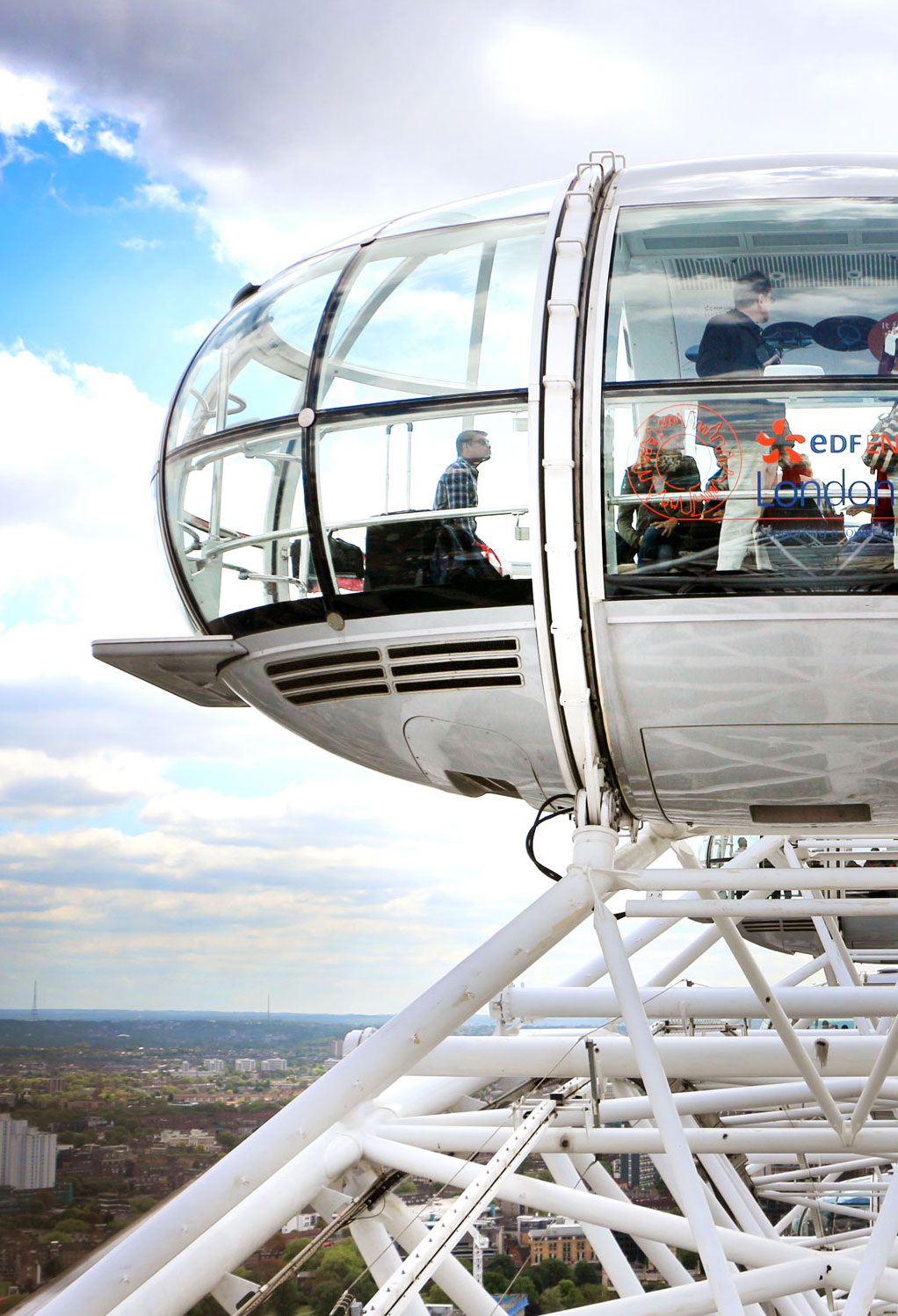These days, it’s somewhat impossible to imagine the skyline of Paris without the Eiffel Tower, L.A. without the iconic Hollywood Sign, or even London without the soaring, slowly-revolving London Eye. But these famous landmarks all share one thing in common — they weren’t meant to stick around for as long as they have. Long before they could reach icon status, their original plans, for a variety of reasons, called for them to be dismantled and forever lost to history. Discover which other iconic landmarks across the globe have defied the odds and stood the test of time.
Montreal Biosphere – Montreal, Canada

Visionary architect Buckminster Fuller is best remembered for having popularized the geodesic dome, a lightweight but durable structure that could be used for all types of buildings. The American Pavilion at Expo 67 in Montreal was partially covered by a grand and airy dome of Fuller’s design, rising 203 feet tall with a diameter of almost 250 feet. The dome, made of steel lattice work, was originally meant to be dismantled at the conclusion of the world’s fair.
However, it was discovered that during construction, workers had welded the steel trusses together, rather than simply bolting them. The expense of taking down the dome was too great, so it was left in place in Montreal’s Parc Jean-Drapeau. The original acrylic dome, which covered the structure, caught fire in 1976 and was not replaced. In 1990, the building beneath the Biosphere opened as a museum highlighting ecosystems and biodiversity — fitting topics to be explored inside a futuristic structure designed by Fuller, an early environmental activist.
Nashville Parthenon – Nashville, Tennessee
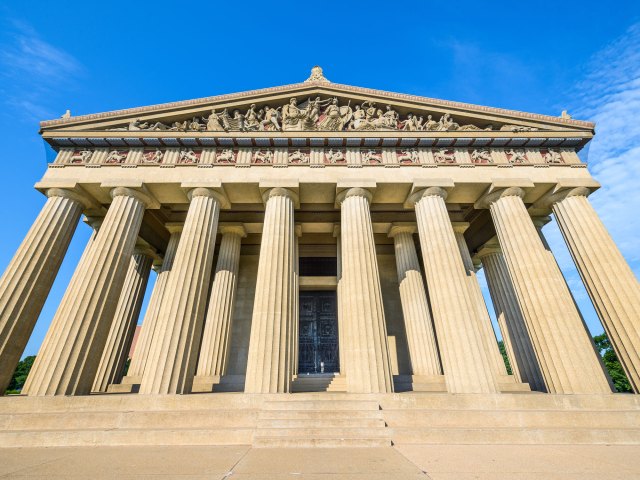
Two thousand years after the original Parthenon was built in Athens, the city of Nashville commissioned this full-scale replica for Tennessee’s statehood centennial celebration in 1897. Its purpose was to honor (and promote) the city’s nickname, “the Athens of the South.” During the centennial, the building was used as an art pavilion, with skylights illuminating the artwork by day and relatively new electrical power to light it during the evening. Designed to mimic every last detail of the original, the structure was supposed to last for the six-month centennial celebration, but the locals loved the classical glow it lent their city and opted to save it from the wrecking ball.
By the 1920s, the city had to replace the deteriorating temporary materials used on the Parthenon’s exterior with more permanent stone. While the original building took two years to build, the subsequent construction project to make it permanent lasted 11 years. Today it is not only the centerpiece of Centennial Park but also houses an art museum.
Eiffel Tower – Paris, France

The iron-latticed Art Nouveau landmark so indelibly associated with the City of Light wasn’t originally intended to last longer than 20 years. The Eiffel Tower was erected for the World’s Fair in 1889 to commemorate the 100th anniversary of the French Revolution. However, the stunning tower — then the world’s tallest — was less than popular with the Parisian public at the time, some of whom protested its construction and called the design “monstrous.” No matter, because it was slated for dismantling in 1909. Fortunately, the landmark was spared from destruction when its value as a radio tower was realized; ever since, it has remained the most recognizable feature of the Paris skyline.
Washington Square Arch – New York, New York
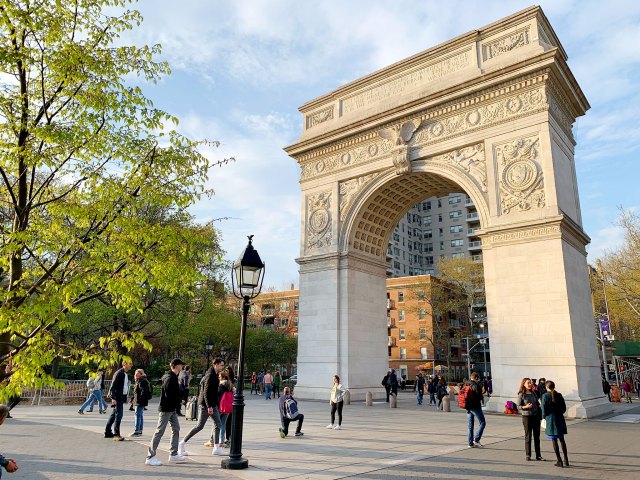
To honor the centennial of George Washington’s inauguration in 1889, a local businessman named William Rhinelander Stewart raised money to erect a monumental arch in New York City’s Washington Square Park. The arch, meant to stand only as long as the three-day spring celebration, was made of plaster of Paris and wood. The centennial was a huge success — all 50 states sent delegates, and there were parades, fireworks, military band concerts, speeches, and a formal ball. And the arch proved so popular that another fund was immediately taken up to turn it into a permanent landmark. The architect Stanford White designed the elegant white marble version which was completed in 1895 and stands today, gracefully marking the southern terminus of Fifth Avenue in Greenwich Village, Manhattan.
Christ Church Cathedral – Christchurch, New Zealand
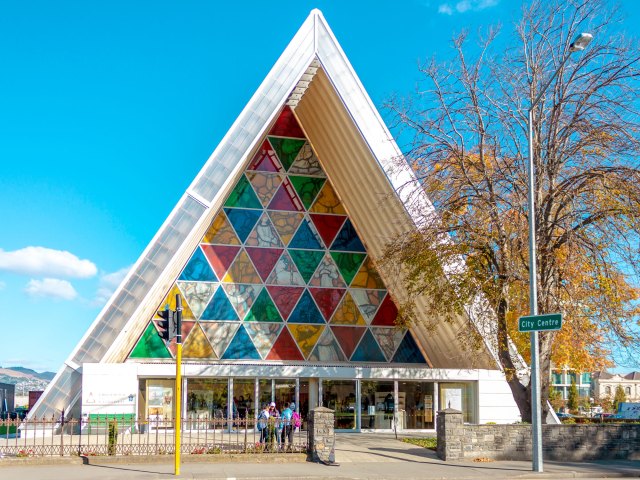
In February 2011, a 6.3-magnitude earthquake struck the city of Christchurch, New Zealand, irreparably damaging, among the many architectural casualties, much of Christ Church Cathedral. While the parishioners and clergy debated whether to rebuild or dismantle the remaining stones of the cathedral, a temporary church was built according to an ingenious design by Pritzker Prize-winning architect Shigeru Ban. The design — a pro bono effort by the architect, who has since stepped in to provide emergency help in other international disasters — employs 24-inch-diameter cardboard tubes, like those used in shipping, as beams in the A-frame building. The tubes are reinforced with steel and timber and coated with a polyurethane to be waterproof.
When it was consecrated in 2013, the church, nicknamed the “Cardboard Cathedral,” became a symbol of the city’s resilience and willingness to rebuild and move forward. After 10 years of indecision, the archdiocese has finally decided to rebuild the Christ Church Cathedral, and so the future of the Cardboard Cathedral — never intended to last more than 50 years — is uncertain. Will the city shore up this tubular emblem of their rebirth and keep it alive past its expiration date?
Museum of Science and Industry – Chicago, Illinois
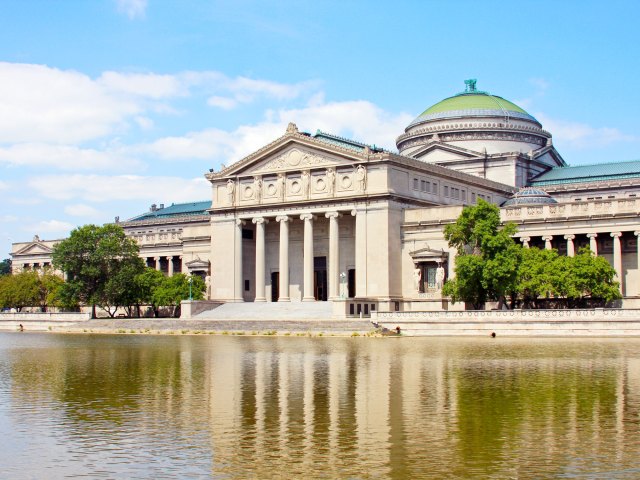
Chicago’s 1893 world’s fair (officially named the World’s Columbian Exposition) spurred major upgrades to Chicago’s architecture and urban layout (and also introduced us to the first Ferris wheel and fluorescent light bulb). Instead of building just one main building, as at previous fairs, the organizers decided to erect grand buildings across the 600-acre site in Jackson Park. The plan included a central pool or “grand basin” surrounded by an immense square of classical Beaux-Arts style palaces with pillars, towers, and domes. Since the buildings were meant to be temporary, their whitewashed facades were made of plaster of Paris, hemp fiber, and glue masquerading together as stone.
When the fair ended, a fire destroyed many of the buildings, and others were bought, disassembled, and moved elsewhere. But one important building remained: the Palace of Fine Arts, the interior of which was built from stronger materials than other buildings because it was meant to hold valuable artworks. It became a museum exhibiting artifacts from the 1893 fair. In the late 1920s, the building’s failing plaster exterior was replaced by carved limestone, making it a permanent structure. Beginning in 1933, it became the home of the Museum of Science and Industry, a temple to modern technology and one of the city’s most popular museums.
Hollywood Sign – Los Angeles, California
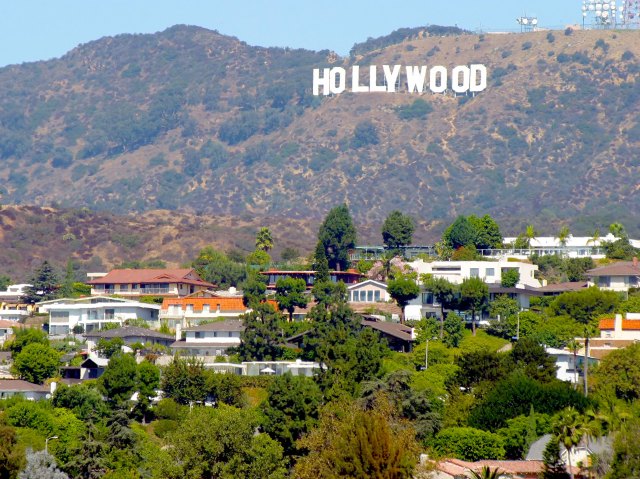
In 1923, to promote his new real estate development, Los Angeles Times publisher Harry Chandler spent $21,000 (the equivalent of more than $300,000 today) to erect 43-foot-high letters spelling out the development’s name: Hollywoodland. The sign, located in the hills above LA’s Griffith Park, was illuminated at night by 4,000 bulbs, and it was originally intended to last only a year and a half. Almost a century later, the first nine letters remain standing. The “land” part of the sign fell into disrepair, and rather than repair it, the city removed it in 1949 so that the sign would better represent the district as a whole. The landmark sign has since become the most recognizable symbol of both the city and of the entire moviemaking industry.
Atomium – Brussels, Belgium
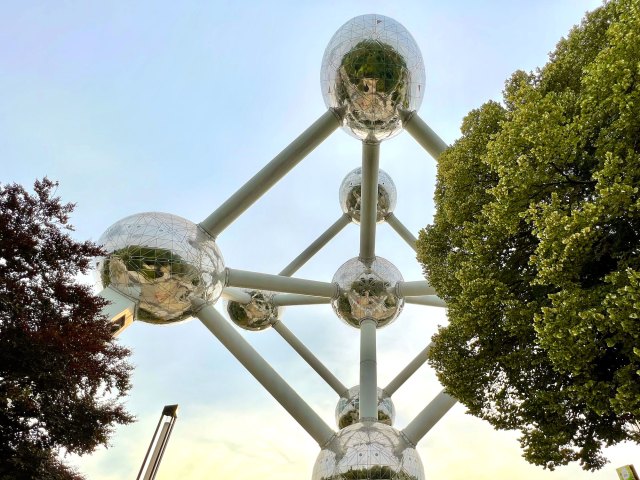
This fantastical structure, an homage to the space-age Googie style of the mid-20th century, was built for Expo 58 (aka the 1958 Brussels World’s Fair) and was initially intended to be temporary. The 335-foot-tall stainless steel-clad landmark — nine globes connected and held aloft by a network of tubes — represents a cell of an iron crystal, blown up to 165 billion times its actual size. While it appears to be merely a sculpture, the Atomium was actually the main pavilion for the fair, and six of the spheres (accessible via escalators inside the connecting tubes) remain open to visitors.
After its success at the fair, the city decided to keep the Atomium, but a lack of maintenance allowed it to fall into disrepair. It was finally renovated between 2004 and 2006. The restoration included changing the exterior from aluminum cladding to stainless steel, adding a glass ceiling on the elevator to the top-most sphere, and integrating LED lights in the globes to enable light shows and illumination at night.
London Eye – London, England
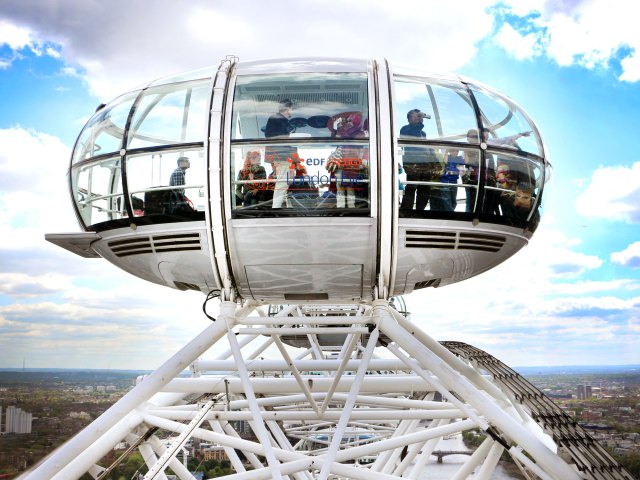
The London Eye’s previous name, the Millennium Wheel, hints at why it came to be: The 443-foot-tall Ferris wheel was erected as part of London’s Millennium celebration in 2000 and was intended to turn on the banks of the Thames for only five years. Construction took place with the wheel resting horizontally, extending out over the river, until it was ready to be hoisted into a functioning upright position. The 32 cabins or capsules (representing London’s 32 boroughs) balance on their spokes to ensure a horizontal ride for passengers throughout the wheel’s leisurely rotation, completed every 30 minutes. Like the Eiffel Tower or the Hollywood sign, the image of the London Eye has come to be an iconic representation of its hometown.
LA Venice Pride Monument – Los Angeles, California
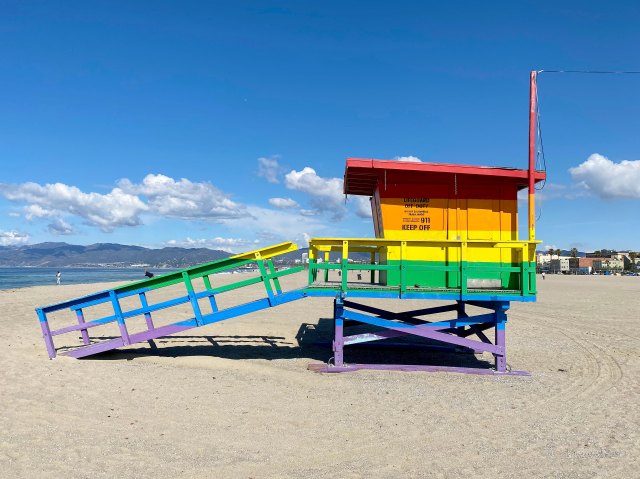
You’re probably familiar with Southern California’s iconic lifeguard stands (think Baywatch or Point Break), but one of them got a rainbow-striped makeover in 2017 as one of several public art installations honoring Pride month. When the stand was unveiled for June, the agreement was that the regular blue color be reinstated in September. An online petition, signed by more than 10,000 people, asked for the Venice Beach tribute to remain a permanent monument to LGBTQ+ culture in Los Angeles. The motion to save the paint job passed the L.A. County Board of Supervisors unanimously, and the stand has stood on the beach at the end of Brooks Avenue ever since. The colorful concept caught on in other seaside communities like Huntington Beach and Long Beach, where lifeguards have also painted towers in celebration of Pride month.
More from our network
Daily Passport is part of Inbox Studio, which publishes content that uplifts, informs, and inspires.






